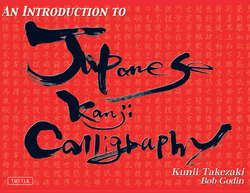Читать книгу An Introduction to Japanese Kanji Calligraphy - Kunii Takezaki - Страница 5
На сайте Литреса книга снята с продажи.
ОглавлениеABOUT THE AUTHOR
Kunii Takezaki was born and raised in Koza City, Okinawa, Japan, and since opening a Japan Penmanship Education Foundation affiliated school in Ginowan City, she’s been busy spreading the message that everyone can enjoy the beauty of calligraphy.
| • 1998 | Received the Japan Penmanship Education Foundation’s Instructor Certification and granted the pen name “Gyokushu”. |
| • 1998 - 2001 | Became a lifetime member as an instructor in the Ginowan City Calligraphy Circle. |
| • 2000 | Received the 8th Level Instructor Certification, the highest level of achievement recognized for a Japanese shodo master. |
| • 2002 | Participated in a calligraphy demonstration visit at a Japanese school in Melbourne, Australia. |
| • 2003 | Conducted calligraphy demonstrations at the U.S. Air Force Academy in Colorado. |
| • 2004 | Participated in street exhibitions and calligraphy demonstrations in New York City’s Central Park. |
| • 2004 | Carried out numerous calligraphy demonstrations in the Little Tokyo district of Los Angeles, and in Santa Monica, California. |
| • 2005 | Joined the World Uchinanchu Business Association (WUB). |
Zen beckons us to unleash the unlimited creative power within our heart, for it is not bound to any single language or culture.
4.7” x 4.7”
12 cm x 12 cm
Ancient Chinese proverbs frequently take the form of the “yonji ikku”, an expression made with a unique series of four kanji characters.
During the Liang Dynasty (504 C.E.), Emperor Wu ordered the writing of a 1000 character scroll comprised of 250 consecutive “yonji ikku” proverbs with no repeated characters to be used for kanji study by his children.
Since that time, Japanese Calligraphy masters have made it a tradition to complete such works to hone their skills.
This scroll was rendered by the author in a single six hour sitting in 2005.
19.3” x 52.8”
(49 cm x 134 cm)
| The Stone of Three Styles | 三体石軽 |
This is a reproduction, created by the author, of a Chinese Gi Dynasty (240 C.E.) engraving that shows a variety of characters rendered in the three sacred scripts of Chinese calligraphy, kobun (古文), tensho (篆書), and reisho (隷書).
17.7” x 23.2”
(45 cm x 59 cm)
| Dance | 舞 |
Sprinkled with gold leaf on a violet background, “Dance” is reminiscent of the liveliness of many Okinawan festivals.
13.4” x 24.4”
(34 cm x 62 cm)
| Samurai | 侍 |
“In my effort to spread the joy of calligraphy around the world, people often request famous Japanese themes or historical figures. This is one that I think everyone will understand.”
26” x 41.3”
(66 cm x 105 cm)
A Personal Invitation by the Author
Due to its limited natural resources and proximity to Japan, China, Korea, and other South East Asian nations, Okinawa has been involved in international trade and commerce for many centuries. As a result of this experience, thousand of Okinawans have emigrated to many nations all over the world.
It’s a shame that many of the second, third, and fourth generation children born of these emigrants seldom have a chance to be exposed to the culture, writing, and language of their ancestral homeland.
As a practicing calligraphy instructor, I’ve noticed an increase in the number of non-Japanese students who have an interest in learning how to write kanji and speak Japanese. I tried to locate a book written in English from which they could both study calligraphy and learn the basics of the Japanese language, all to no avail.
To my students, the descendants of Okinawans living abroad, and all those interested in Japanese kanji calligraphy, I truly hope that this book will help you experience the enjoyment of calligraphy, as have so many others before us.
Kunii Takezaki, “Gyokushu”
September 21, 2005
Okinawa, Japan
